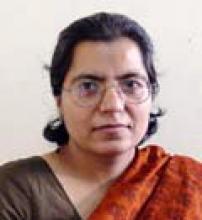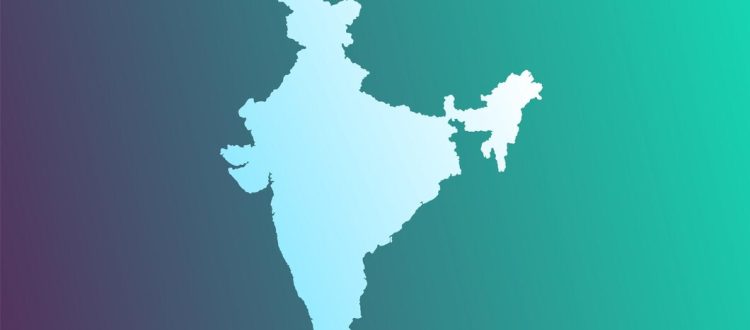Integration to Formation of States in India
THE form of Indian federalism emerging out of the constitutional debates, deliberations and democratic imagination on the floor of the constituent assembly during the period of 1946-49 is a reminder of the fact that Indian federalism is also termed often time as “holding together” rather than “coming together federalism”. This holding togetherness of Indian federalism was forged during the first decade of independent India through institutional innovations and endurance of the deep democratic imaginaries during the anti-colonial struggle of Indian nationalism. This was much more evident in the idea of linguistic and territorial federalism which began to emerge during this period. The questions of regional autonomy, sub-national or sub-state devolution of power and resources, sovereignty of states within the Union, coordination between consolidation and differentiation of power within the federal design of the constitution began to appear in a variety of policies, programs, institutions, discourses and politics of the day.

Asha Sarangi
CPS (SSS), JNU, New Delhi
The political innovations and state initiatives of various kinds to strengthen democratic consolidation in the times of crisis emerging out of partition and the creation of two independent nation-states were to be tested and tried in the years to come. The early years of federal design and its constituent units needed to address issues of development within the liberal democratic framework, concerns for poverty amelioration, intra/inter-state regional imbalance of sustainable natural resources, disparity of institutional infrastructures in health, education and medical sectors primarily, issues of socio-cultural diversity and political leadership among and between states of the Indian Union. Despite these early challenges, Indian state continued to experiment and establish new institutions of various kinds to usher in robust forms of federal polity soon after independence. For almost a decade and half with Congress as a single dominant party ruling the country till 1967, the relationship between the union and the states was rather less strenuous and moved on the idea of workable partnership.
With creation of fourteen new states after the integration of 550 plus princely states soon after independence, India began a journey of state formation on a new scale and size. Each of these states were linguistically defined with their boundaries and borders remapped. In Nehruvian scheme of social welfarism, the territorial re/demarcation of these large states would bring in more equitable distribution of resources and an amicable flow of capital and labour between developed and underdeveloped regions of these states. The idea of equitable economic growth of different regions and states of India coupled with some vision of social justice and empowerment of the marginalized sections of the society began to be aspired for by the Indian state. However, the vested interests of the power-elite and its class/caste/regional consolidation were entrenched in the institutional architecture of the State. A number of institutions in the realm of economy (planning commission, inter-state councils), education commissions and committees of various kinds, Language commissions, Cultural institutions, Election Commission, Public Service Commissions, and a large number of new universities and colleges for both natural and social sciences among others, were set up to pursue the objectives of state-led economic and political development. Historically, a sizeable section of educated urban middle class and rural landowning classes were instrumental in influencing the state level policies and programs through their representations in several of the public and political institutions of the new Republic. The lessons learnt through their participation in the national movement, this middle class knew the knowhow of political art of persuasion and negotiation with the power-elites of the day. Maya Tudor calls India’s story as a case of “democratic exceptionalism”. In my views, the language-culture based territorial re-demarcation and remapping of states and their regional reconfiguration was an exceptional democratic measure with enormous challenges and crises that unfolded in the years to come. A number of ‘sons of the soil movements’, identity based assertive claims and the demands of several regional-political groups through the establishment of regional political parties were offshoots of the journey from integration to formation of states after independence.
It is important to ask here whether the territorial-federal design that emerged in the years of 1948-56 led to the kind of political activity in regions of these states to demand for the devolution of powers- financial and political primarily- and demand larger share of expenditures from the Union. How was the distribution of power in three lists-union, state and concurrent- as a hallmark of Indian federalism was challenged or affected by various demands of these states? The newer demands for more states in the subsequent years to be carved out of these larger states, but smaller in size and resources, emerged out the federal crisis of governance since the 1980s onwards. The phenomenon of regional imbalances in development is interlinked with the federal design of the country since its inception.
The institutionalization of federal structure in independent India had a unitary bias from the beginning. Crisis like the decline of dominant party system of Congress, emergence of non-congress parties in different states, financial and political instabilities of the late 1970s and early 1980s, revamping of centre-state relations as suggested in the Rajamannar committee report along with increasing demands of state autonomy movements from different parts of the country were true tests of India’s federal polity. The linguistic-territorial federalism needed to achieve some sort of a balance between regional, political, economic and administrative levels of centre-state planning and cooperation over their federal division of powers and resources. The Indian Constitution and its well-laid detailed provisions regarding the federal power distribution between the Union and its constitutive states were to ensure that any attempt to override states autonomy in certain spheres by the Centre will be thwarted off and constitutionally challenged in the courts. However, the idea of state capacity in terms of the relationship between federal and democratic centrism tells us how formal federal institutions play a significant role in determining the rationale for giving special status to some states or regions of the states or granting full statehood to others.
The first two decades after independence remained crucial for the reorganization process to continue in different parts of the country. States began to see their own potential of resources and political leadership in order to respond to the interventionist attempts in their affairs by the centre and be a bit more autonomous. The idea of strong states as part of the strong Centre and polity was being tested during these years. Their mass bases derived from the linguistic-cultural contiguity and territorial compatibility had to be part of the democratic federal institutionalism. The strong state leadership emerging in these states was seen as a welcome move to hold the states together by leaders like Nehru. The two decades of 1947-67 can be characterized as decades of democratic federal politics under the “Congress party dominance system” which began to receive a tumultuous turn and a turning point from 1967 onwards.
The decline of the Congress system and the rise of non-Congress parties and politics at the level of state politics is characterized by James Manor as “the natural heterogeneity” of the Indian states which began to reassert themselves. The first decade can be seen having heralded an important era of the ‘political culture’ and its sublimation in the forms of numerous social and political protest movements and their impact on the emergence of civil society organizations. This manifested in the domains of political ideologies, public opinions and articulation in the public spheres. Both public and political institutions and their representational domains began to reflect the public culture of Indian democracy. The first decade provided a kind of contextual historical comparative framework to make sense of the idea of political community/ies and their identities emerging after the complex process of boundary creation and formation of states which began to engage with new vocabulary of politics at the state, regional and local levels. The assertion of regional identity based on the deepening of overlapping caste, class and regional hierarchies and alliances began to challenge and affect the federal structure and practices. This regional consciousness impacted the ideas and objectives of democratic equality and social justice particularly with the emergence of populism and majoritarianism, both of which did contribute to the crisis of federalism from the late 1960s onwards.
Copyright: © (2022) Asha Sarangi

